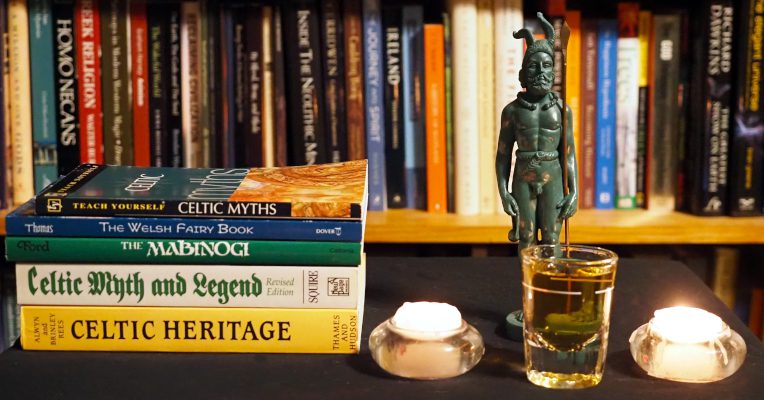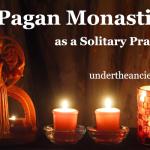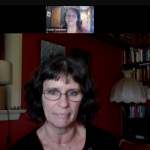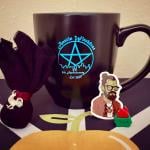Recently I’ve seen some arguments – mostly on Twitter – around how we should read myths. And by “myths” I mean the stories of our ancestors, especially the stories our ancestors told about the Gods.
I touched on this before, in Gods Behaving Badly? Myth, Virtue, and the Limitations of Modern Thinking from 2018. That post was more about the nature of the Gods and how They are always virtuous. In this post I want to focus on the stories and how we can interact with them with wisdom and integrity.
We need to begin where we are, living in a society that doesn’t really know what to do with myths.

Misconceptions about myths
Ask the average person “what’s a myth?” and you’re likely to hear “a myth is a made up story.” That completely misses the point. You may hear “myths are stories primitive people told because they were superstitious and didn’t understand science.” This is at best an ethnocentric misunderstanding. Our ancient ancestors had the same brains we have and they were quite capable of understanding cause and effect. Or, if someone is trying to be progressive, they may say “there’s a bit of truth in every myth.” But by “truth” they mean “historical fact.” Sometimes that’s accurate, but even when it is it misses the point.
As a quote of uncertain origin says, a myth is a story about things that never were but always are. A myth is a story about who we are, where we came from, and especially about how we should live.
Myths about the Gods tell us something about Them, but mainly they tell us something about how our ancestors understood the Gods and how they related to Them. But exactly what these stories tell us isn’t always immediately clear.
Begin with a plain reading of the story
If you pick up The Lord of the Rings or one of Anne Rice’s vampire stories or the latest urban fantasy, you don’t tell yourself “this is just a made up story.” No, you start reading and you go where the story takes you. You tell your friends about Frodo and Sam taking the ring to Mordor knowing full well that Mordor isn’t a place in this physical world, there is no one ring to rule them all, and there are no hobbits (calling Homo floresiensis a hobbit is a bit of a stretch).
And none of that matters, because the story isn’t just entertaining, it’s also meaningful and inspiring.
None of the ancient stories were written in modern English. All translations are an act of interpretation. So it’s important to get a faithful translation, not so you can methodically deconstruct the text, but so you can understand the context of the story as closely as possible for someone who lives in a very different culture from the one in which the story was written. And so the story isn’t bowdlerized, causing you to miss important details left out because they’re “impolite.”
But once you have a good translation, read myths plainly and let the stories work their magic on you.
Reject literalism
Christian fundamentalists read the Bible literally. They claim they don’t, but if you think the Earth is 6000 years old and humans were created in their current form, you’re reading the Bible literally regardless of how you interpret Song of Solomon.
And so to be a Christian fundamentalist is to believe things that are demonstrably false, because you insist on reading myths literally. This is what happens when you forget that stories can be true without being historical.
Pagans must not make the same mistakes with our myths.
The stories of our ancestors – and the stories in the Bible, for those who know how to read them properly – were not written to be newspaper reports or court transcripts. They weren’t told orally and then written down to convey facts. They were told and written to communicate truth: ideas about what’s important.
Look for the truth – what’s really important
Was the Morrigan really so vengeful as to harass and curse Cú Chulainn just because he refused Her aid and Her love? That’s what a literal reading of their story would indicate. But perhaps what’s important in this story is that Cú Chulainn was a great hero who fought bravely even when he was destined to lose. Or perhaps the point is that refusing the aid of a Battle Goddess isn’t a smart move. Perhaps both of those things are true.
Parts of the story reveal something about the true nature of the Morrigan. In other parts, She helps reveal the nature of Cú Chulainn.
And if you read the story literally, you’ll miss most of this.
Use comparative mythology sparingly
There is a well-meaning but ultimately harmful attempt by many people to claim that “deep down it’s all the same.” Many paths up one mountain and all that. But religion is many paths up many different mountains, and stories are too. Stories from different cultures may have common elements and common themes. But they also have differences that you’re likely to miss if you overlook their cultural context.
Joseph Campbell and his book / TV series The Power of Myth were very helpful to me at a critical time on my journey out of fundamentalism. But his concept of “monomyth” did a great disservice to the stories of our ancestors and the ancestors of many others.
Ironically, what was most helpful to me was Campbell’s demonstration of how different people in different parts of the world tell different stories reflecting different priorities. The fundamentalists’ insistence that their story is the one story for everyone is blatantly false. But so is the idea that all myths convey the same truth.
Get comfortable with ambiguity
Read much mythology and you start to notice inconsistencies. As Morgan Daimler often reminds us, for every rule about the Fair Folk, you’ll find at least one exception. Often many exceptions.
Pharaonic Egypt lasted for four thousand years – the last Pharoah is closer in time to us than to the first Pharoah. Their stories are remarkably consistent, and some of them are quite literally carved in stone. But still, there are variants across time and from place to place.
Which ones are true? All of them.
Our literalist, materialist culture teaches that inconsistencies indicate weaknesses and falsehoods. In myths, inconsistencies simply reflect the complexities and ambiguities of life.
Paganism is built on experience, not on the written word
We are not the People of the Book. We’re the People of the Library – the people of many books. We look for truth where ever we can find it.
The stories of our ancestors tell us something about the Gods, and especially about how our ancestors understood Them. These stories are treasures, particularly considering that many of our sacred traditions were interrupted for over a thousand years. They give us hints, clues, a starting point.
But they are only starting points, not the final authority. Reading about how our ancestors worshipped the Gods is no substitute for worshipping Them ourselves. Reading about how they experienced the Gods is no substitute for experiencing them ourselves.
The stories we tell about our experiences will become the myths of future generations. Not our “made up stories” – fiction is still fiction. But our accounts of our experiences and interpretations will guide those who come after us to have their own experiences. They will add their stories to ours, building a body of living wisdom.
Read myths plainly – focus on the story, not on the words. Look for truth – especially truth about how to live virtuously in difficult circumstances. Reject literalism and embrace ambiguity.
And then put what you learn to use building a practice of your own.


















